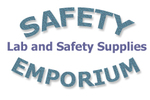- Home
- Fire
- Extinguishers
- By Class
By Class
In the US, the National Fire Protection Association (NFPA) classifies fires into five general categories:
- Class A fires are ordinary materials like burning paper, lumber, cardboard, plastics etc.
- Class B fires involve flammable or combustible liquids such as gasoline, kerosene, and common organic solvents used in the laboratory.
- Class C fires involve energized electrical equipment, such as appliances, switches, panel boxes, power tools, hot plates and stirrers. Water can be a dangerous extinguishing medium for class C fires because of the risk of electrical shock unless a specialized water mist extinguisher is used.
- Class D fires involve combustible metals, such as magnesium, titanium, potassium and sodium as well as pyrophoric organometallic reagents such as alkyllithiums, Grignards and diethylzinc. These materials burn at high temperatures and will react violently with water, air, and/or other chemicals. Handle with care!
- Class K fires are kitchen fires. This class was added to the NFPA portable extinguishers Standard 10 in 1998. Kitchen extinguishers installed before June 30, 1998 are "grandfathered" into the standard.
There is no one extinguisher that handles all of these classes, and your extinguishers must be selected based on the potential fire threats you face. For more on selection considerations visit http://www.ilpi.com/safety/extinguishers.html. To browse extinguishers by class, select an item from the menu on the left:
 Loading... Please wait...
Loading... Please wait...

